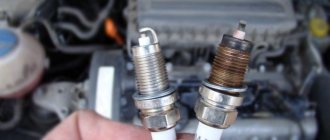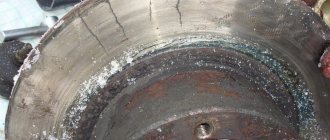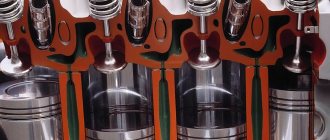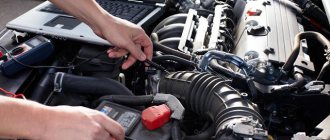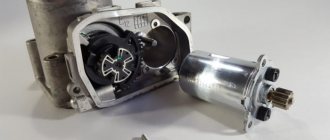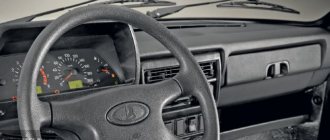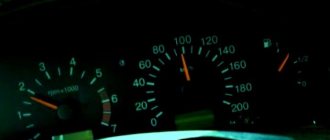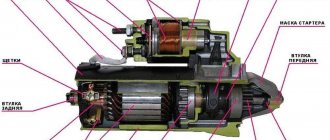This article will tell you everything you need to know about the P0171 code. You will also learn how to diagnose and fix the error yourself in the easiest and fastest way.
There is a lot of misinformation about the P0171 code and a lot of dubious advice on how to fix it. In this article, we will tell you how to properly diagnose this error code in order to find solutions as quickly as possible.
What does error code P0171 mean?
P0171 is triggered when the front oxygen sensor detects a lean mixture. This can be either a short-term or a permanent lean mixture.
The front oxygen sensors regulate the fuel mixture that leaves the engine. If the oxygen sensor detects a slight lean or rich mixture, it sends a signal to the engine control unit to adjust the mixture in the next combustion cycle to obtain the ideal fuel mixture for better fuel economy.
Oxygen sensors typically have a range of +/- 15% to adjust the fuel mixture.
If the fuel mixture is outside this range, the O2 sensor will not be able to adjust the mixture. The engine control unit (ECU) will initiate and store a fault code in memory. If the mixture is lean, error code P0171 will be triggered.
If the mixture is rich, then you will have a P0172 code. If you have a V-twin engine or two O2 sensors, you may also see a P0174 code, which means the mixture is also lean, but on the second cylinder bank.
Possible causes of error p0172
To understand what causes the rich mixture error, you need to make a list of reasons for yourself using a small algorithm:
Enrichment of the mixture occurs due to incomplete combustion (excessive supply or lack of air); when the fuel does not burn, it means the spark plugs or coils are not working well; when it is supplied in excess, the oxygen sensor or injectors are to blame; There is not enough air - the air flow sensor gives incorrect data.
Excess fuel can rarely happen, but lack of air is a typical problem. Air is supplied to the fuel through the connection between the MAP sensor and the lambda probe. But in addition to sensors, the problem can also be caused by a violation of thermal clearances (engines with gas turbochargers), mechanical damage to various gaskets and seals, irregularities in the timing belt or insufficient compression.
New Lada: Correct adjustment of the luminous flux of headlights on the Lada Granta
To deal with all possible sources that caused the failure, the check is carried out on the following points:
Based on all of the above, we can determine the main reasons:
Symptoms of P0171
If the fuel mixture is slightly lean, you will rarely have any other P0171 symptoms other than a "Check Engine" on your dashboard. If the mixture is very lean, the following signs may appear:
- "Check Engine" light is on.
- Hard idling or acceleration.
- Loss of power.
- Misfires.
- Low/high/floating speed XX.
- Difficult start.
- The engine may stall while driving.
How does a car behave on a lean mixture?
When operating on a lean mixture, the car engine idles unevenly, overheats due to the lower combustion rate of such a mixture, and popping noises are heard in the intake pipe. The car itself can slow down and slowly gain momentum under load.
When the mixture is lean, the temperature of the engine increases, which leads to overheating, burnout of the valves and piston.
During long-term operation with a lean mixture, excessive fuel consumption occurs due to a slow increase in speed, as a result of which you have to operate the car in low gears. A lean mixture appears as a result of an imbalance in the supply of air and fuel for mixing with a large amount of air.
P0171 Causes
There are many sensors or parts that can cause a P0171 code and a lean mixture. You will find the list below. And we'll start with the most common places to check when you have a lean fuel mixture. It is important to check for other trouble codes besides P0171. This may give you a clue as to where to start looking for the problem.
- You can read fault codes using a diagnostic scanner or an ELM327 adapter with the Torque program.
- Intake air leak (most common).
- Faulty PCV valve (PCV - positive crankcase ventilation system; often found on VAG cars such as Audi, VW, Seat, Skoda).
- Low fuel pressure (caused by a weak fuel pump, filter or fuel pressure regulator).
- Faulty EVAP valve (EVAP - gas tank ventilation system).
- Faulty O2 sensors.
- Faulty EGR valve (exhaust gas recirculation valve).
- Faulty MAF sensor (mass air flow sensor - MAF).
- Exhaust gas leak (in front of front oxygen sensors).
- Coolant temperature sensor.
- Faulty sensor wiring.
- Malfunction of the ECU/ECM/PCM control unit (rare).
Injector problems
You don't have to be an expert to understand that the problem here lies in the operation of the injector. And first of all, before we start studying lean mixture, let’s try to find out what it even is. This is important only because such a reason can lead to expensive repairs to the car.
Why do jerks happen?
The presence of jerks while the car is moving is a problem that directly or indirectly indicates the presence of problems with the engine, or more precisely, a loss of power. In total, there are two features that affect the development of power in the engine - fuel supply and the ignition system.
If with the ignition, everything is more or less clear, due to the inspection of the generator, spark plugs, ignition wires for faults, and the battery for charge, then in the case of the ignition system everything looks much more complicated.
High voltage wires are marked with arrows
Inspecting the condition of the spark plugs
To ensure a successful engine start, it is necessary to mix the fuel and air mixture in ideal proportions; this is what the injector is responsible for.
It happens that when mixing these proportions, a malfunction occurs, and the mixture turns out to be rich or lean.
A clear example of the air-fuel mixture ratio.
In order for the car to obtain maximum power when burning fuel in the cylinders, it is necessary to bring its indicator to the level of 0.85 - 0.9, when excess oxygen = > 1 (at this indicator, gasoline burns completely without residue - approx.), and when there is a lack of oxygen, and the readings are equal. The main reasons for a lean mixture
The main and most important symptom that the system has a lean mixture is a stalling or unstable engine. And if the mixture is very poor, then it is possible that it will not start at all.
The cause of these problems is most often a clogged air filter (see “replacing the air filter”), clogged injectors, wear in the fuel pump, and there may also be air leaks into the system. All these reasons are, one way or another, related to the stable operation of the engine.
P0171 Possible solutions
There are many different solutions for the P0171 code. We will describe them, starting with the most common. Diagnostic tools that can help you troubleshoot problems are described in the diagnostics section below.
- Replace faulty vacuum hoses or gaskets around the intake manifold.
- Repair other intake leaks.
- Replace the PCV valve.
- Replace the fuel pump/fuel filter/fuel pressure regulator or repair the wires.
- Replace EVAP valve.
- Replace oxygen sensors.
- Replace the EGR valve.
- Replace the mass air flow sensor (MAP/MAF).
- Repair exhaust leak.
- Replace the coolant temperature sensor.
- Repair of faulty wires.
- Replace the ECU (ECM/PCM, rare).
Carrying out an inspection
Speaking about the lack of fuel, there are also three main reasons.
- The first includes problematic operation of the fuel pump, when it does not have enough power or it does not work as it should.
- Next comes the non-optimal resistance of the fuel filter.
- Well, the third reason will be a leak that may occur in the pressure regulator . Also, the breakdown may consist of simple contamination of the fuel injectors.
Error Resolution Table
| Problem | Symptoms | Causes | Solutions |
| Error P0171 | Check Engine Rough idling or acceleration Loss of power Misfire Low/high/floating speed XX Difficult to start Engine may stall while driving | Intake air leak (most common) Faulty PCV valve (common on VAG: Audi, VW, Seat, Skoda) Low fuel pressure (caused by weak fuel pump, filter or fuel pressure regulator) Faulty EVAP valve Faulty EGR valve Faulty O2 sensors Faulty MAF Coolant temperature sensor Faulty sensor wiring Faulty ECM/PCM (rare) | Replace faulty vacuum hoses or gaskets around the intake manifold Repair other intake leaks Replace the PCV valve Replace the EGR valve Replace the fuel pump/fuel filter/fuel pressure regulator or repair the wires Replace the EVAP valve Replace the oxygen sensors Replace the air flow sensor Repair exhaust leak Replace the coolant temperature sensor Repairing faulty wires Replace the ECU (ECM/PCM, rare). |
The main signs of a lean fuel mixture
The main symptom by which it is determined that a car is running on the wrong mixture is an engine that constantly stalls. With a very small amount of gasoline vapor in the mixture, the spark generated by the spark plug simply cannot ignite such fuel. Another sign is that the car jerks while driving, or even moves jerkily. Sometimes these symptoms can indicate other problems. Therefore, it is worth checking other systems as well.
How to diagnose P0171?
Since the P0171 trouble code means the vehicle is running lean, it can be caused by many different sensors or faulty parts.
This guide is about how to fix the P0171 code the fastest way and what an experienced mechanic will do to find the problem. When performing these steps, you may need some tools to quickly and effectively troubleshoot problems. But you can do without them, try following the instructions.
1. Connect the charger to the car
The first step you should always take when diagnosing a car. You will often turn on the ignition while troubleshooting, and the vehicle voltage should not be low.
Low voltage may cause other unrelated trouble codes. In rare cases, low voltage can even damage electronics, so always use a charger when diagnosing.
2. Check all sensor parameters using an OBD2 scanner
If you have an OBD2 scanner, you can check all sensor parameters. Just check the values of the MAF, coolant temperature, boost pressure, intake temperature sensors and make sure the values are correct.
Many scanners have tables of base values that should be displayed at certain speeds and temperatures. Also, check the oxygen sensor parameters and make sure they are correct. Replace faulty sensors, clear error codes and try again.
You can also do it the old fashioned way and measure all the sensors with a multimeter. This will take a very long time and you have to find which values are correct. If possible, we always recommend using an OBD2 scanner.
3. Check for other fault codes
If you have measured all sensor parameters and are satisfied that they are correct, check for other stored and associated fault codes in the controller. They can tell you where to start your search.
Many problems with sensors occur periodically. When you check them, you get normal parameters, but while driving they may not work correctly and cause a P0171 code.
The control unit is smart. It recognizes the faulty value in just a second and this triggers a fault code. These are the trouble codes you should be looking for. If you receive another error code from any sensor, you need to start checking with the corresponding part of the car first. This can save a lot of time.
Check for inlet leaks
Air leaks are a common problem when it comes to the P0171 code. Leaks in the intake manifold/vacuum hoses/turbocharger can fool the MAF sensor and cause the mixture to lean.
The mass air flow sensor measures all the air entering the engine and reports this amount to the controller. The ECU then injects fuel into the engine depending on the amount of air. A leak can distort this value, resulting in a lean mixture.
The easiest way to find a leak is to use a smoke generator. They, unfortunately, are quite expensive for the car enthusiast. You can make a smoke generator yourself.
Video on how to find air leaks at home without a smoke generator:
And one more piece of advice. You can use a flammable spray like Quick Start or brake cleaner. Spray around the intake while the engine is idling. If the RPM increases, there is a leak in the spray area. For the same purposes, you can use a soap solution.
An air leak can often be found in the PCV valve, especially on VAG vehicles such as Audi, Volkswagen, Seat and Skoda. If you have one of these cars, check the PCV valve under the intake manifold or on top of the engine on newer 2-liter engines.
PCV valve
You should also check the EVAP valve, which controls fuel gases. A leaky or faulty EVAP valve can cause a lean mixture. You can test this valve by blowing through it to see if it is closed or not when it should be.
The problem often occurs in the hose between the intake manifold and the fuel pressure regulator. This causes low fuel pressure and sets the P0171 code.
Check fuel pressure
Low fuel pressure is a common occurrence with the P0171 code. Troubleshooting this problem can be quite difficult because you often check the fuel pressure only at idle. Low blood pressure can occur in other situations. This is usually solved by connecting a pressure gauge.
Many cars have a fuel pressure sensor that allows you to monitor the pressure while driving. But the problem is that this sensor may also be faulty. In this case, the controller will show a low fuel pressure error.
In any case, you need to check the fuel pressure at idle. This may indicate a faulty fuel pump or fuel filter. To check, you will need to connect a pressure gauge to the fuel line.
You should find out what pressure your car has. Disconnect the vacuum hose between the intake manifold and the fuel pressure regulator to obtain the correct value. You can ask a partner to rev the engine to see if the fuel pressure drops.
6. EGR check valve
An open EGR valve when it should be closed can fool the air flow sensor and cause a lean mixture. Checking the EGR valve can be a challenging task. This usually requires removing it or using a smoke generator.
Many OBD2 scanners have an electronic EGR test function. They check the air entering the engine as it opens and closes. This can often help locate a faulty EGR valve because the test will give a positive or negative result.
The ECU often recognizes faulty EGR valves and stores a fault code stored in the controller's memory, but not in all cases. So it's better to double check it. Faulty EGR valves causing P0171 are common on Opel engines. Clogged EGR lines on Opel engines can also cause this.
Here is a video on how to check the EGR valve:
Checking air leaks at the outlet
Air leaking into the exhaust system in front of the oxygen sensors can fool them and cause code P0171. To check for this, the easiest way is to start the engine and listen carefully for any leaks in front of the O2 sensors.
You can have someone plug the exhaust pipe to create pressure in the exhaust system. If you have a smoke generator, everything is even easier. Simply connect it to the rear exhaust pipe and check for smoke from potential leak areas.
It could also be the oxygen sensor that is causing the P0171 code, but this is something you should have already checked in the previous diagnostic steps.
Clean the mass air flow sensor (MAF)
Fine dust may pass through the air filter and collect on the sensor. This may cause the sensor to give incorrect readings of the amount of air entering the engine.
Cleaning the air flow sensor is often sufficient. This can be done using electrical contact cleaner or air flow sensor cleaner. You need to spray the cleaner on the sensor inside the housing.
Signs and causes of lean mixture formation
However, it is very easy to diagnose:
- The simplest and most obvious is that the car stalls when moving. And not only when driving uphill, when this can be attributed to an incorrectly selected gear, but when driving on straight, level roads. However, this is only when the mixture is really lean.
- Another situation is when the car jerks while driving. Especially if you are driving not a fully loaded car, but an empty one, on a flat road. Although in this situation it cannot be said unequivocally that a poor air-fuel mixture is an indispensable reason. You may need to check other vehicle systems, such as the exhaust system.
- Another sign is that the car “shoots” when driving. Although more and more often in new cars this is not due to a lean mixture, but to problems in the exhaust system, this symptom is obvious. Especially when unstable exhaust appears not just once in a while, but constantly, since with single pops the situation is the opposite: the mixture is too rich, and the remaining gasoline that is not burned in the engine burns out in the muffler, ignited by a hot pipe.
- The color of the carbon deposits on the spark plugs can also tell a lot about the composition of the mixture. If it is: brown, then everything is fine, there is an optimal amount of air-gasoline in the mixture;
- white, or alternatively light, then there is a lot of air in the mixture and it is poor;
- black candles - excess gasoline that does not burn completely;
If signs of a lean mixture are detected, this diagnosis can be confirmed in several ways:
- If the car is equipped with an on-board computer, the “Check Engine” indicator will light up on the dashboard, and P0171 will appear in the error list.
- By contacting a specialized service station, you can test the operation of the engine using a gas analyzer sensor, which is installed in the exhaust pipe.
- Finally, you can use a simple wired or Bluetooth OBD scanner, which costs only a few dollars on Aliexpress, a smartphone and the appropriate software.
You need to look for the cause of the formation of a lean mixture based on the diagnostic results and errors that appear along with P0171. The standard reasons are:
- Problems with sensors (mass air flow sensor, air pressure sensor, diaphragm pressure sensor, oxygen sensor). Incorrect sensor information usually results in an incorrect fuel/air mixture.
- Problems with the EGR valve. The valve may allow more exhaust gases into the engine than necessary.
- Timing problems. Incorrectly aligned marks or problems with tensioners can also lead to this problem.
- Problems with the fuel supply (faulty fuel pump, clogged fuel filter or injectors).
- Excess air supply through a crack in the hose or a loose connection in the air supply system.
Conclusion
- Intake air leaks are often the cause of P0171. And it needs to be checked first. The easiest way to check is to use a smoke generator. But there are also alternative methods.
- Low fuel pressure also often causes a P0171 code and should be checked with a manual fuel pressure gauge.
- A faulty PCV/EVAP is common on VAG vehicles such as Audi, VW (Volkswagen), Skoda and Seat. It should be checked if you have one of the machines listed.
- Faulty EGR valves are common on Opel engines. If you have such a car, first check the exhaust gas recirculation valve.
- Multimeters can be bought: here and here. Car chargers - here and here.
Previous post Error P0174 - what it means, symptoms, causes, diagnosis, solution
Next entry How to find air leaks at home
How to find an air leak
First method. It is the simplest, it allows you to find out whether there are any air leaks at all and does not require absolutely any equipment. All we need is just the key for “10”. You need to unscrew the mass air flow sensor from the air filter and pull it out together into the corrugation.
Now we start the engine and, using the palm of our hand, completely block the air inlet into the intake manifold through the mass air flow sensor. The corrugation should shrink from the vacuum and after a couple of seconds the engine will stall. We don’t let go of our hand and listen for where things hiss—this is an extra air leak (more details in the video below).
Second way. Here we need some kind of flammable liquid - gasoline, ether, WD-40, carburetor cleaning fluid, etc. It is best, of course, to use gasoline or ether, they are more natural for engine operation. We fill a syringe with gasoline or take a can of any of the above liquids and spray all the connections of the intake manifold. If any of the connections are not sealed, then the liquid will definitely get inside the manifold and the engine speed, at the same time, should change (either decrease or increase). If the engine does not react in any way, then the connection is sealed, there are no problems with it and you need to look further. Well, if the engine starts to react, consider half the job done. We change the gasket or hose and rejoice that error P0171 has disappeared.
The third method is to use a smoke generator. If you don’t have such a thing in your garage, you can ask your friends for it or make it yourself. There are many options for making smoke generators on the Internet. I chose the simplest and fastest - a smoke generator made from a regular cigarette.
Why is she poor?
The reasons for a lean mixture on the injector, as already mentioned, are quite trivial. Anyone who has an engine with an injector in their car knows that it can regulate the ratio of gasoline vapors to air. However, not everyone thinks about the correct balance. For people who are not inclined to go into technical details, we explain: the norm is the proportion of a kilogram of those same vapors per 15 kilograms of air.
It maintains parity between economical consumption and engine power. If the weight of air is reduced to 13 kg, there will be more gasoline, the engine will gain more power, but fuel consumption will also increase significantly.
In the opposite situation (often allowed with full consciousness of what is being done), when air is introduced in an amount of 16 kg, the power drops by 10 percent compared to an enriched mixture, but the savings increase by 15-20%. However, further dilution of gasoline leads not only to a decrease in engine thrust, but also to an increase in consumption: trying to crawl up some hill, you press on the gas, burning more fuel, and efficiency is zero.
Therefore, no one sets the injector to 20 kilos of air per 1 gasoline. That is, there are some problems with the node itself.

